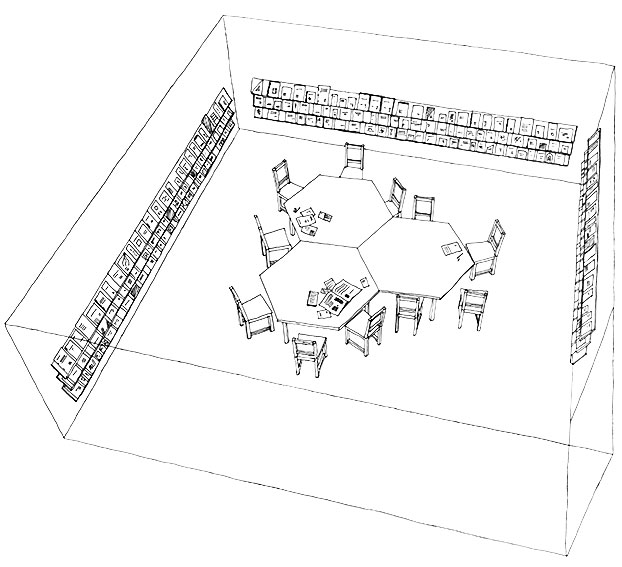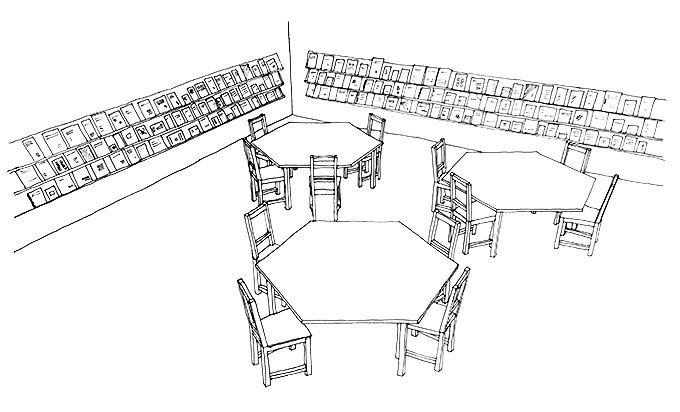
What follows is a short and provisional English description of Temporada de Projetos na Temporada de Projetos, the title of the curatorial proposal to which this website is dedicated. In time, further translations of the site's content will be online.
As an initial contextualization, an interesting reference is an article by Cristiana Tejo published on "Flash Art" (Nov-Dec 2008), which can serve as a support for our claim regarding the current Brazilian contemporary art situation. The article is called "New Brazilian art" and it mentions how the "salon" model (in which artists submit works that are selected by jurors) is widely accepted Brazil in both by artists and all range of institutions, from state museums to galleries independent as a means of insertion into the art world, effectively making it omnipresent throughout the country, despite it having become obsolete in other parts of the world, especially in Europe. It is worth mentioning that the vast majority of salons in Brazil are financed by public funds, even when they are private initiatives, whereby public funds are used indirectly via tax exemption.
There is no aim here to back nor dispute Tejo's claims regarding the obsolescence of this model, but it can surely be affirmed that a considerable amount of young artists in Brazil are indeed investing heavily in trying to get their pieces accepted by the venues mentioned by Tejo (such as "Rumos Itaú Cultural", "Salão de Pernambuco", "Centro Cultural São Paulo", "Paço das Artes" and others).
The article serves more or less as a background to understanding how the present curatorial proposal began. Working primarily as artists (albeit with strong interests in art history, criticism and curatorship) the authors also participate in these salons, leading into researching how these salons operate in Brazil today. Not only was this widespread salon model trend detected, but it also became clear that some (counter-intuitive1) artistic practices are coming along with it, mainly the creation of a large number of projects that are sent to them. Most of these projects are never carried out and are thrown into oblivion, making it is as if a considerable part of what is being produced today is getting lost, essentially because of its largely embrionary nature.
Still, the main focus is not the fact that most of the projects are not accepted nor made (something that would easily slide towards a non-productive and simplified decry of the situation), instead the interest lies in that the act of projecting one's work has become very recurrent in Brazilian art practices, something which we believe is in accordance with what has become standard in contemporary (art) production practices. But it remains unbeknownst to a large part of the public that this is taking place in the artistic context; and "public" is not just implying the average exhibition-goer, but also artists and art student themselves, who remain tied to an idealization of artist as the genius whose extravagances and idiosyncrasies are largely imposed onto others and carried out at whim and mostly with irresponsible support financial an idealization that quickly crumbles when in contact with the mechanisms of contemporary art production.
This curatorial proposal itself begun and was sent as a project to one of these salons, the one at Paço das Artes which is aptly named "Temporada de Projetos" (loosely translatable to "Projects Season") and accepts not only artists' projects but also curatorial projetcs (something unusual in Brazil). Sensitive to this context, this proposal is called Temporada de Projetos na Temporada de Projetos (which means "Projects Season in the Projects Season"). The most pragmatic explanation that can be given regarding the exhibition that is being planned is: showing the artists' projects (just the projects, not the works they project) that were sent to the same salon where the Temporada de Projetos na Temporada de Projetos proposal was selected, regardless of they having been accepted or not into the salon by the jurors. Below are some projections on how the projects could be exhibited.

Other than the exhibition, the proposal also contemplates lectures aimed at reflecting on the exhibition of projects through open and public debates. Two workshops that should provide formative experiences by means of supervised activities are also planned. To them, discussions platforms on the internet will be added (this website, a blog, a mailing list and other tools such as Twitter, Facebook, etc.), all of which should help describe the whole idea, its continuous process of implementation and its spawnings, and keep an open channel to deepen whatever issues might be ignited throughout.

Some of the questions that should be raised through the exhibition, the lectures, the workshops and the discussion platforms are: can a project be understood as part of an artists' practice? Furthermore, to what extent can the project replace the work of art itself, especially when the conditions required to carry out the project are not met? Can the project at least stand-in as a representation of part of the process of making an artwork? Taking into consideration the varied public that are thought to be (but generally are not) contemplated by contemporary art shows, how will they be granted access to a more vast field of production through the presentation of hundreds of projects? Can we demystify the project's selection and creation processes to the benefit of artists and public alike? What kind of formative experiences can we provide to artists that are beginning to get in touch with these processes? Is it possible to carry out, with artists and their projects, what has long been taking place among specialists in other areas of knowledge (through meetings, symposiums, seminars or conferences) when research is presented, discussed and enriched prior to being made (in place of the primordial stages of production being secretly carried out, as usually seems to be the case in art)? Can the simple exhibition of projects serve as an interface among artists so that they can contextualize their productions relative to one another and initiate exchanges and collaborations? Will the public engage with these projects as if they were real artworks and provide feedback to the artists? And so on...
[1] - Counter-intuitive as opposed to, as one could expect, a practice linked to that typical of artists participating in nineteenth century salons, who submitted works that were made in studios in advance.